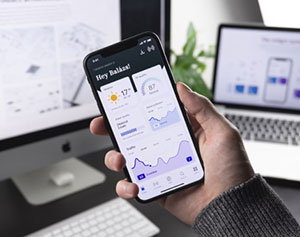Why Direct Mail Deserves a Leading Role in Your Omnichannel Marketing Strategy

Blog post By Paula Chiocchi on 2025-07-09
A recent study reveals that most companies have increased their email marketing budgets in the past 12 months—more than any other channel. It's a decisive vote of confidence in email. However, the same study highlights a critical contradiction: 33% of consumers report feeling overwhelmed by the volume of email marketing they receive.
What isn’t overwhelming? Direct mail—the traditional “snail mail” ads that land in a physical mailbox.
While email and digital tactics continue to be vital to omnichannel marketing, direct mail is gaining new traction, especially among younger audiences, according to another study shared by MediaPost. It's no longer a legacy tactic; it's a strategic channel that complements digital exceptionally well. When used intentionally, direct mail can lift engagement, support channel integration strategies, and improve campaign attribution.
Recently on the B2B Influence podcast we sat down with Keith Goodman, VP of Corporate Sales and Marketing at Modern Postcard, to discuss the current state of direct mail in modern marketing. Here are five key takeaways for B2B marketers from the conversation, with insights into why direct mail belongs in your omnichannel mix and how to integrate it effectively:
1. Direct Mail Cuts Through the Noise
Consumers can feel inundated by digital ads and email, but direct mail lands differently. Unlike a fleeting subject line or banner ad, a physical mail piece is tangible and enduring. It commands attention by its physical presence. You're not swiping past it on a screen—you're holding it in your hands.
It may even sit on a desk or kitchen counter for days or weeks, reinforcing brand awareness over time. That longevity gives direct mail a unique ability to "do the heavy lifting" in a campaign, initiating interest that digital touches can later convert into sales.
2. It Plays Well with Digital and Strengthens Channel Sequencing and Integration
At a minimum, it takes 10 touches to move a buyer to action, but today, it's typically 15 or more. No single channel can do it alone. That's where direct mail fits in. It's not about replacing digital or email but amplifying them.
Consider this common buyer journey:
- A prospect receives a mailer at home while off-device.
- Days later, an email with the same message lands in their inbox—now they’re at their desk and ready to click.
- Later still, a programmatic ad appears while they’re browsing on mobile, offering the perfect moment to complete the purchase.
By sequencing touchpoints intentionally, you create a more seamless and persuasive buyer experience. With its unique timing and format, direct mail often serves as the catalyst behind this multi-touch journey.
3. Data-Driven Targeting Makes It Smarter Than Ever
Modern direct mail is no longer broad or generic like it was in years past. Today, it is fueled by data, and many of the targeting benefits associated with digital campaigns now apply to email, too. At OMI, we can match demographic and firmographic data to physical addresses, providing access to intelligence that complements digital IDs for use across our clients’ omnichannel campaigns, including those involving direct mail.
And while digital data excels at behavioral targeting, mail data offers depth with location-based, household-level, and B2B firmographic details. When these two datasets are combined, the result is a more powerful and precise B2B2C targeting strategy that reaches buyers wherever they are, physically and digitally.
4. Attribution Challenges Call for Cross-Channel Collaboration
In large organizations, channel silos are common and often competitive. One team might push for email attribution, another for digital, and another for direct mail. The result is fragmented reporting and suboptimal insights.
To overcome this, successful marketers align on attribution before the campaign even launches. Is it first-touch, last-touch, or weighted attribution? Or better yet, which sequence of touches delivers the highest conversion rate?
By testing combinations—direct mail first, digital second, email third (or any variation thereof)—marketers can identify the most effective path to purchase. Attribution becomes less about credit and more about strategy.
5. Testing Sequences, Not Just Channels, Unlocks Performance
Marketers often test creative and media channels, but they will forego testing the order in which they deploy those channels. That's a missed opportunity because sequencing and the way you integrate channels matters. A piece of direct mail may generate interest, but it's often a follow-up email or digital ad that captures the conversion.
Today, our team employs a variety of integration strategies, such as retargeting via postal mail after digital engagements or sending direct mail early in the cycle to soften the market before digital activation. The key is to leverage the strengths of each medium, not in isolation but in tandem.
Final Thoughts: Direct Mail Isn’t a Relic—It’s a Revenue Driver
Omnichannel success means more than running campaigns across multiple platforms—it means integrating those platforms in a way that maximizes the impact of each one. Direct mail, when combined with digital, social, and email, creates a layered, responsive journey that increases response and conversion rates.
The data shows that direct mail is not only relevant—it’s increasingly essential. If you’re not yet using it to support your digital strategy, now is the time to reconsider. Contact us at request@outwardmedia.com for a complimentary consultation. Go here for the complete podcast episode featuring Keith Goodwin of Modern Postcard.
DOWNLOAD YOUR FREE ebook
At OMI, we believe good things happen when you share your knowledge. That's why we're proud to educate marketers at every level - in every size and type of organization - about the basics of email marketing and the contact data that powers it.
-
The Executive's 15-Minute Guide to Building a Successful Email Marketing Database
-
A 15-Minute Guide to Fortune 2,000 Businesses and Executives
-
Five Best Practices for Using Email Marketing to Target SMBs



